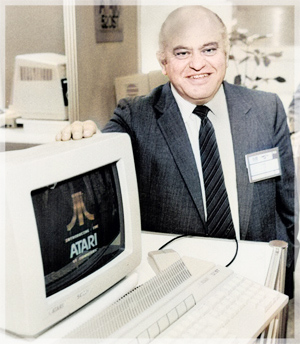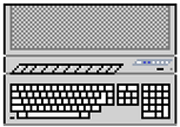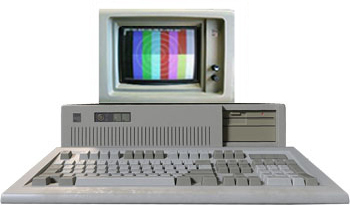Computer Made for the Masses, not the Classes
Released in April 1985, the Atari ST was one of the first 16-bit home computers in the world.

Based on Motorola 68K, the ST offered processing power, 512K of RAM, a GUI, 512 colors, and a 3-voice sound. All that for $799, when the IBM PC and Macintosh could do less for a much higher price tag.
Atari’s CEO used to say that the ST is made for the masses, not the classes.
 The Short History of the Atari ST-Line
The Short History of the Atari ST-Line
After leaving Commodore, in 1984, Jack Tramiel bought Atari's Consumer Division from Warner Bros. The name was changed to Atari Corporation. Tramiel took with him several Commodore’s engineers, including Shiraz Shivji, who was previously involved in the C64 development. Shiraz Shivji was the head of engineers in the Atari ST line. The Atari 520/1040 ST and the MegaST sold very well in Europe and the US. However, after the release of the Commodore’s Amiga 500, things became difficult for Atari’s home computing department.
In late 1989, Atari announced the STE, a multimedia-enhanced ST, designed to directly compete with Amiga computers. The CPU remained the same, however, STE offered several improvements. It featured a new operating system, hardware graphics, 4,096 colors, and a significantly better PCM stereo sound. The STE sold particularly well in Europe, and especially in France, the United Kingdom, and Germany.
Later models included the Atari TT and Falcon computers, both based on Motorola 68030. The Falcon 030 was ahead of its time by featuring a 24-bit color palette, 16 PCM sound channels (50 kHz), and the 56001 DSP chip running at 16 MIPS. However, it was too late for Atari. They were constantly losing market share since the start of the 1990s. Only a few months after the Falcon release, the company closed its computer department to concentrate on the new Jaguar gaming console.
 Operating System (TOS)
Operating System (TOS)
The Atari ST used a bitmapped color GUI before any other computer. Originally, Microsoft proposed to port Windows to the ST platform, but Atari refused since they needed to wait for two years. Therefore, they decided to adopt Digital Research's GEM.
|
Initial release |
20 November 1985 |
|---|---|
|
Latest release |
4.04 |
|
Default User Interface |
GEM |
|
Successor |
MultiTOS (Multitasking) |
- Atari TOS stands for "The Operating System"
- GEMDOS file system became part of Atari TOS
- GEM (Graphics Environment Manager) was a direct port of the widely used CP/M to the 68K
MiNT Operating System
MiNT is a free operating system, an alternative to the kernel of the Atari ST. » MiNT information and downloads here
-
Multi-tasking OS offering Memory Protection
 Atari ST/TT/Falcon Information & Sales
Atari ST/TT/Falcon Information & Sales
This is some basic information, and sales figures, regarding the family of Atari's 16/32-bit computers.

-
Atari sold 75% of its computers in Europe (Germany and the UK were Atari's strongest markets)
-
There were Falcon/TT clones that used 68040/68060 CPUs, manufactured by Medusa Computer Systems and Milan Computer
 Atari ST and the Music Industry
Atari ST and the Music Industry
Since its launch in 1985, the Atari ST was immediately embraced by the music industry. With built-in MIDI ports and a user-friendly graphical OS that runs smoothly, many professional and amateur musicians used the Atari for music sequencing and as a controller of musical hardware.

- The Atari ST was the cheapest 16-bit computer in the mid-1980s
- Atari ST was not the only home computer incorporating MIDI ports, but it was the only reliable one
- MIDI stands for 'Musical Instrument Digital Interface' and it allows the connection between different electronic musical instruments and communication with a computer
- The Atari 1040ST combined with Cubase and/or C-Lab Notator has been used by thousands of musicians worldwide
- In the left column, there is a list with plenty of famous ST musicians
■ Introducing the Atari ST
Binaryvalue.com 2022 (c)
Sources: Wikipedia, Muzines.co.uk, Atarilegend.com, AtariAge.com















 TOP-10 APPS
TOP-10 APPS
 TOP-30 GAMES
TOP-30 GAMES





